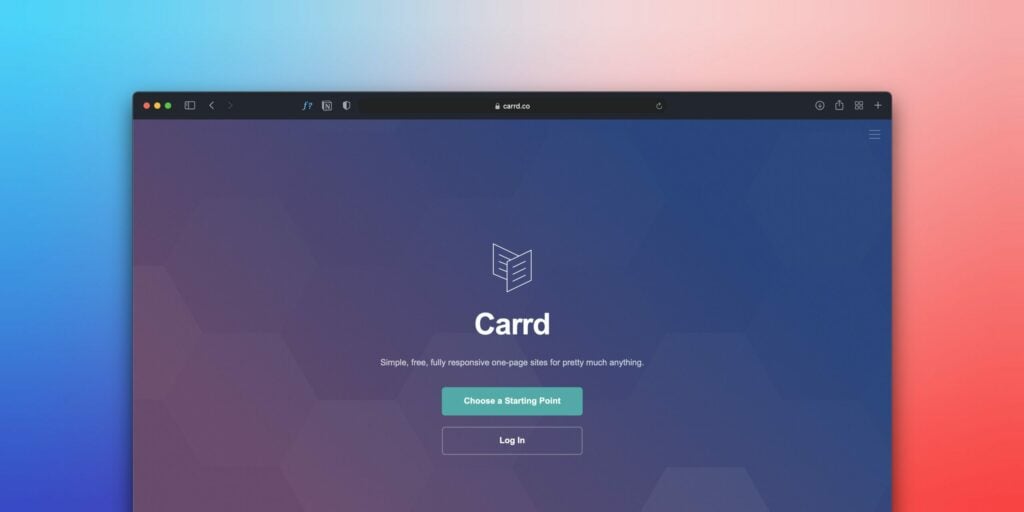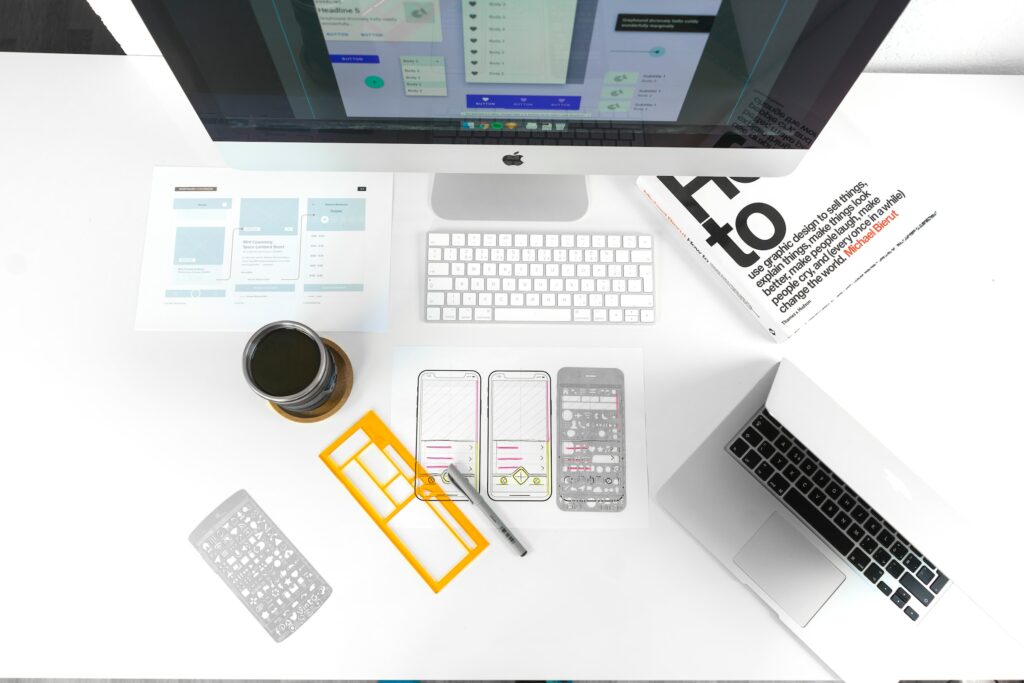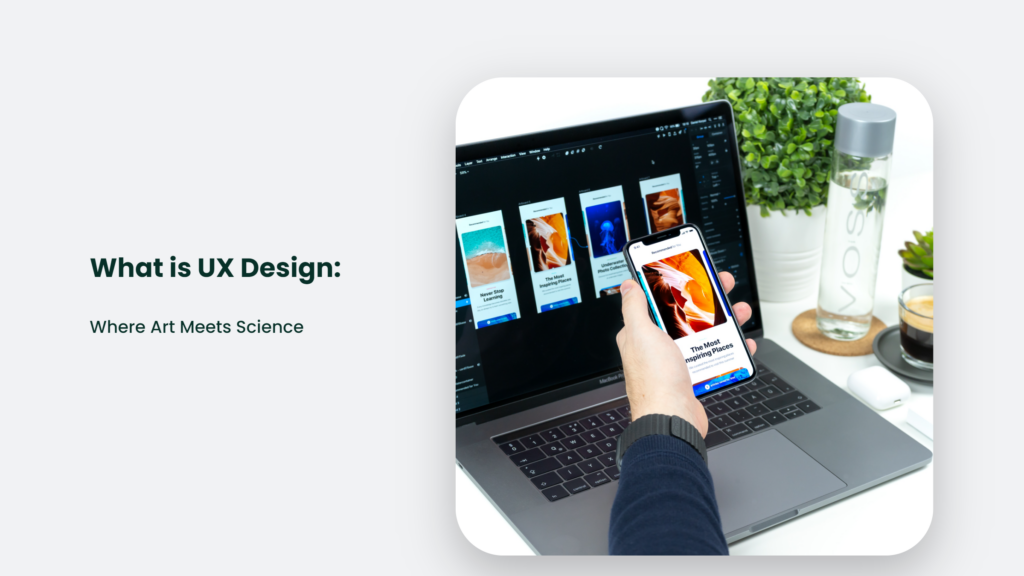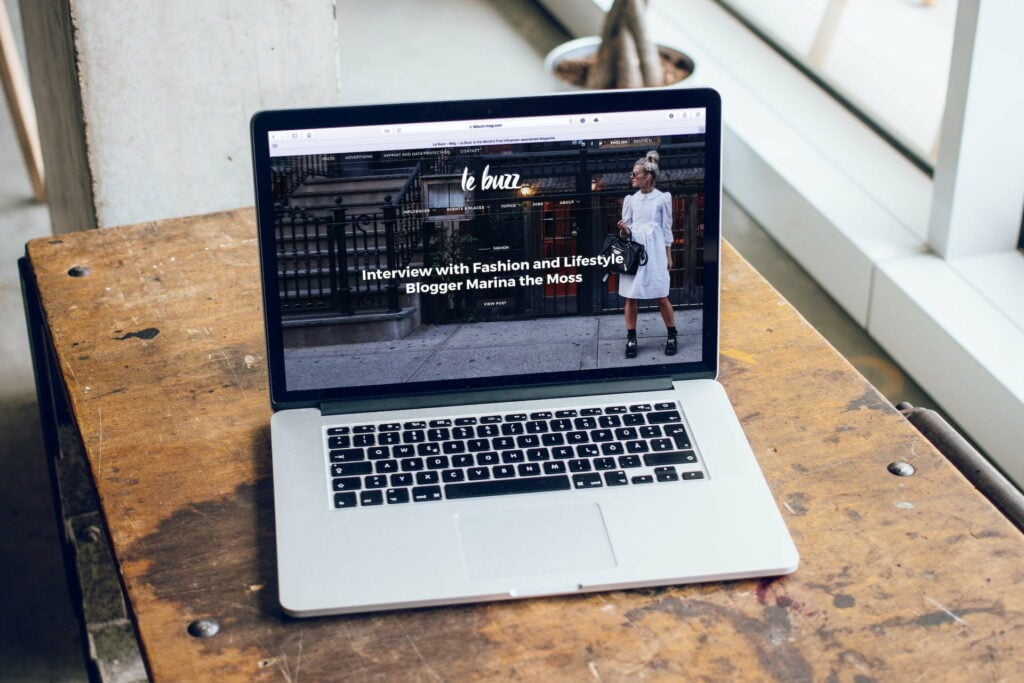

What is UX Design: Where Art Meets Science

As Seen On
You’ve probably heard the term “UX Design” thrown around like confetti at a wedding, but what is UX Design? Is it a mystical blend of art and science or another buzzword in the ever-evolving tech world? Buckle up because we’re about to dive into the fascinating world of User Experience (UX) Design, where creativity and data-driven decisions collide.

What is UX Design?
UX Design, or User Experience Design, is the process of creating products, services, or systems that are visually appealing and provide a seamless and enjoyable experience for the user. It’s about understanding the needs and desires of the people using your product and crafting an experience that meets those needs while also delighting them in the process.
As Cristian Bosch puts it, “Design is not Art. Design, unlike art, is about arranging objects, ideas, or concepts in some sort of order”. UX Design is where the beauty of art meets the precision of science. It’s a field that’s constantly evolving as new technologies and user behaviours emerge.
The Art of UX Design: Making Pixels Pretty
While UX Design is not solely about aesthetics, it’s hard to deny the importance of creating visually appealing products. After all, as Josh Barton points out, “I just like beautiful things myself”. But the art of UX Design goes beyond just making things look pretty; it’s about crafting a functional and delightful experience.
For example, consider the process of creating a mobile app. A UX Designer might start by sketching wireframes and mockups, experimenting with different layouts and colour schemes to find the perfect balance between form and function. They’ll also consider factors like typography, iconography, and animations, all contributing to the overall user experience.
But the art of UX Design doesn’t stop at the surface level. As Nil Tyrion explains, “When creating a product or a service, I always seek to deliver an emotional value”. It means that UX Designers must also consider the emotional impact of their designs, using elements like colour, imagery, and storytelling to evoke feelings of joy, excitement, or even nostalgia.
The Science of UX Design: Data-Driven Decisions
While the artistic side of UX Design is undoubtedly important, it’s only one piece of the puzzle. UX Designers must also rely on data and research to inform their decisions, ensuring that their designs are beautiful and effective in meeting their users’ needs.
This is where the scientific method comes into play. UX Designers must constantly test and iterate on their designs, using data to validate their assumptions and make improvements. This might involve conducting user interviews, analyzing usage data, or running A/B tests to compare design variations.
Some key data-driven aspects of UX Design include:
- Usability: Ensuring that users can easily navigate and interact with your product.
- Accessibility: Make sure your product is usable by people with disabilities or other limitations.
- Conversion: Optimizing your design to encourage users to take desired actions, such as making a purchase or signing up for a newsletter.
The Marriage of Art and Science in UX Design
So, is UX Design an art or a science? The answer is both. UX Designers must strike a delicate balance between their work’s creative and analytical aspects, using their artistic skills to create visually appealing designs while relying on data and research to ensure those designs effectively meet their users’ needs.
As Tobias van Schneider puts it, “In my mind, the thinking behind creating a good infographic and creating a great UI/UX design is very similar”.
UX Designers must be both artists and scientists, using their unique blend of skills to create products that are not only beautiful but also functional and enjoyable to use.
Frequently Asked Questions:
What is the difference between UX Design and UI Design?
UX Design focuses on the overall user experience, while UI Design (User Interface Design) is more concerned with the visual aspects of a product, such as a layout, colours, and typography.
How do UX Designers use data in their work?
UX Designers rely on data and research to inform their design decisions, using techniques like user interviews, usability testing, and A/B testing to validate their assumptions and make improvements.
Can anyone become a UX Designer?
While there is no one-size-fits-all path to becoming a UX Designer, a strong foundation in design principles, an understanding of user behaviour, and a willingness to learn and adapt to new technologies are all essential skills for success in the field.
In Conclusion
UX Design is a fascinating field that combines the beauty of art with the precision of science, creating products and experiences that are both visually appealing and effective in meeting the needs of their users. Whether you’re a seasoned professional or just starting your journey into UX Design, remember that the key to success lies in striking the perfect balance between creativity and data-driven decision-making. Happy designing!
Konger
Up until working with Casey, we had only had poor to mediocre experiences outsourcing work to agencies. Casey & the team at CJ&CO are the exception to the rule.
Communication was beyond great, his understanding of our vision was phenomenal, and instead of needing babysitting like the other agencies we worked with, he was not only completely dependable but also gave us sound suggestions on how to get better results, at the risk of us not needing him for the initial job we requested (absolute gem).
This has truly been the first time we worked with someone outside of our business that quickly grasped our vision, and that I could completely forget about and would still deliver above expectations.
I honestly can't wait to work in many more projects together!
Disclaimer
*The information this blog provides is for general informational purposes only and is not intended as financial or professional advice. The information may not reflect current developments and may be changed or updated without notice. Any opinions expressed on this blog are the author’s own and do not necessarily reflect the views of the author’s employer or any other organization. You should not act or rely on any information contained in this blog without first seeking the advice of a professional. No representation or warranty, express or implied, is made as to the accuracy or completeness of the information contained in this blog. The author and affiliated parties assume no liability for any errors or omissions.

